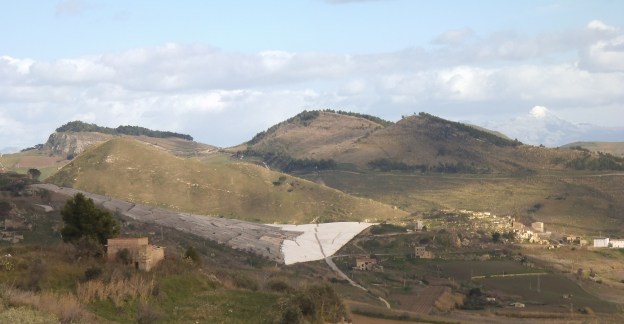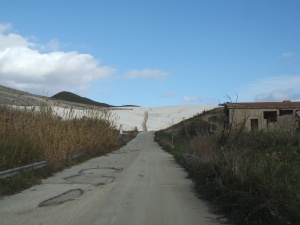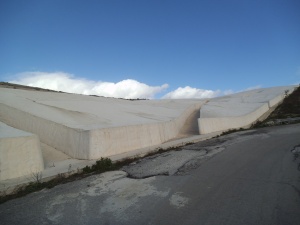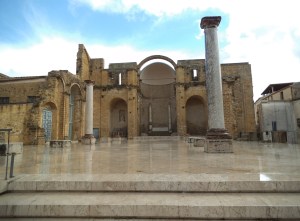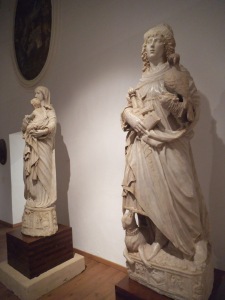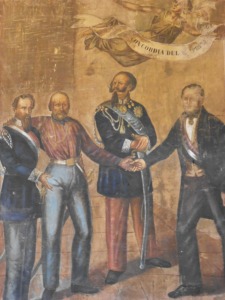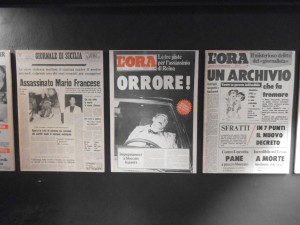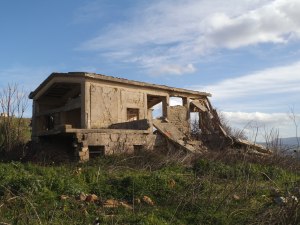 The road to the old town of Ruderi di Gibellina is so cracked and deformed that it is hard to imagine that the earthquake which flattened it occurred nearly 50 years ago. Up to 400 people died, a thousand were injured and 100,000 left homeless when the 5.5 tremor hit south west Sicily on the 15th of January 1968. The surviving inhabitants suffered even more until the new town was completed 12 years later nearly 20 kms away. Much delay was caused due to corruption and Mafia threats regarding building contracts.
The road to the old town of Ruderi di Gibellina is so cracked and deformed that it is hard to imagine that the earthquake which flattened it occurred nearly 50 years ago. Up to 400 people died, a thousand were injured and 100,000 left homeless when the 5.5 tremor hit south west Sicily on the 15th of January 1968. The surviving inhabitants suffered even more until the new town was completed 12 years later nearly 20 kms away. Much delay was caused due to corruption and Mafia threats regarding building contracts.
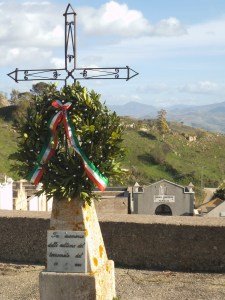 It’s a sunny day and I stop briefly at the cemetery of Ruderi di Gibellina, the only structure to have survived. A simple memorial remembers those who died on that dreadful day. The road winds down to the site of the former town, now almost completely covered in a layer of concrete, looking like a misplaced glacier. In fact, Alberto Burri’s modern art installation is named ‘IL Cretto’ (The Crevice) and the cuts in the concrete represent the positions of the roads that ran through the town. It’s almost as if the artist has sought to bury the pain of the past. However, a few derelict and crumbling buildings remain to serve as a reminder of what happened here 50 years ago.
It’s a sunny day and I stop briefly at the cemetery of Ruderi di Gibellina, the only structure to have survived. A simple memorial remembers those who died on that dreadful day. The road winds down to the site of the former town, now almost completely covered in a layer of concrete, looking like a misplaced glacier. In fact, Alberto Burri’s modern art installation is named ‘IL Cretto’ (The Crevice) and the cuts in the concrete represent the positions of the roads that ran through the town. It’s almost as if the artist has sought to bury the pain of the past. However, a few derelict and crumbling buildings remain to serve as a reminder of what happened here 50 years ago.
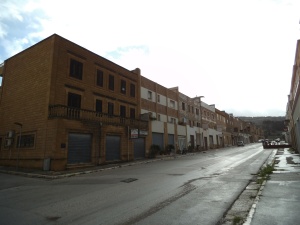 The following day, on the anniversary of the earthquake, I visit the new Gibellina. It is Sunday morning and the streets are empty, so I can drive around and check out the modern art which is dotted around the place. It’s clear that they applied lessons learned from the earthquake when they designed the new town. Houses and flats are only one or two storeys and the streets are very wide, but it is devoid of any real character and feels like a 1970s council estate. I wondered if there would be a memorial service at the church but perhaps it is too early as it is all locked up.
The following day, on the anniversary of the earthquake, I visit the new Gibellina. It is Sunday morning and the streets are empty, so I can drive around and check out the modern art which is dotted around the place. It’s clear that they applied lessons learned from the earthquake when they designed the new town. Houses and flats are only one or two storeys and the streets are very wide, but it is devoid of any real character and feels like a 1970s council estate. I wondered if there would be a memorial service at the church but perhaps it is too early as it is all locked up.
I move on to Salemi, high on a hill and not quite as badly affected by the earthquake, though the ruins of the Chiesa Madre are a reminder of that time. The sacred art from all the affected churches was collected up, restored and is now displayed in the Museum of the Jesuit College where there is also, bizarrely, a replica of ‘Mary’s House’ of Loreto. As well as the sacred art, the museum has a small archaeological section, a rather disturbing Mafia exhibition and some memorabilia related to Garibaldi. On the 11th of May 1860 he landed at Marsala with a thousand Red Shirts and managed to defeat 15,000 Bourbon soldiers at Calatafimi. Neighbouring Salemi became the first capital of the Unified Italy and proudly flew the Tricolore flag, if only one day.

